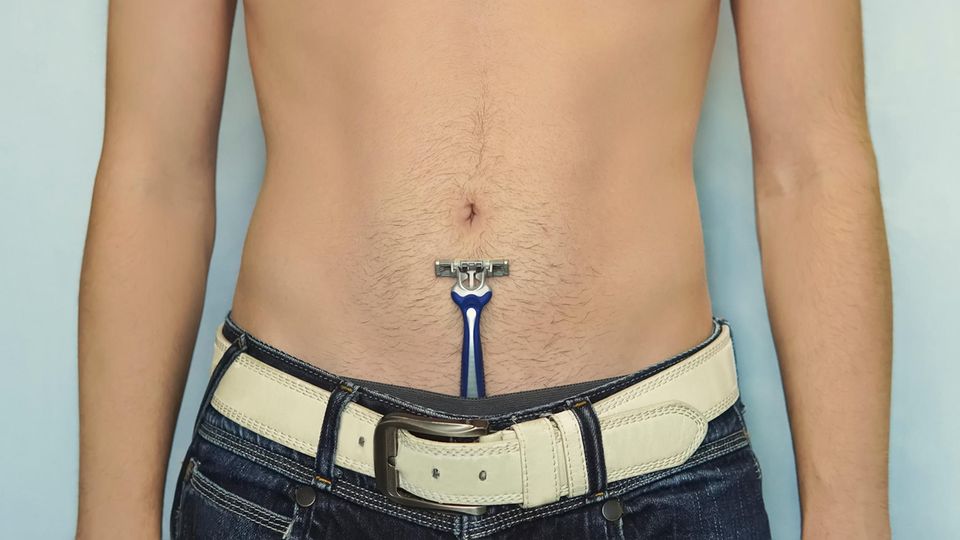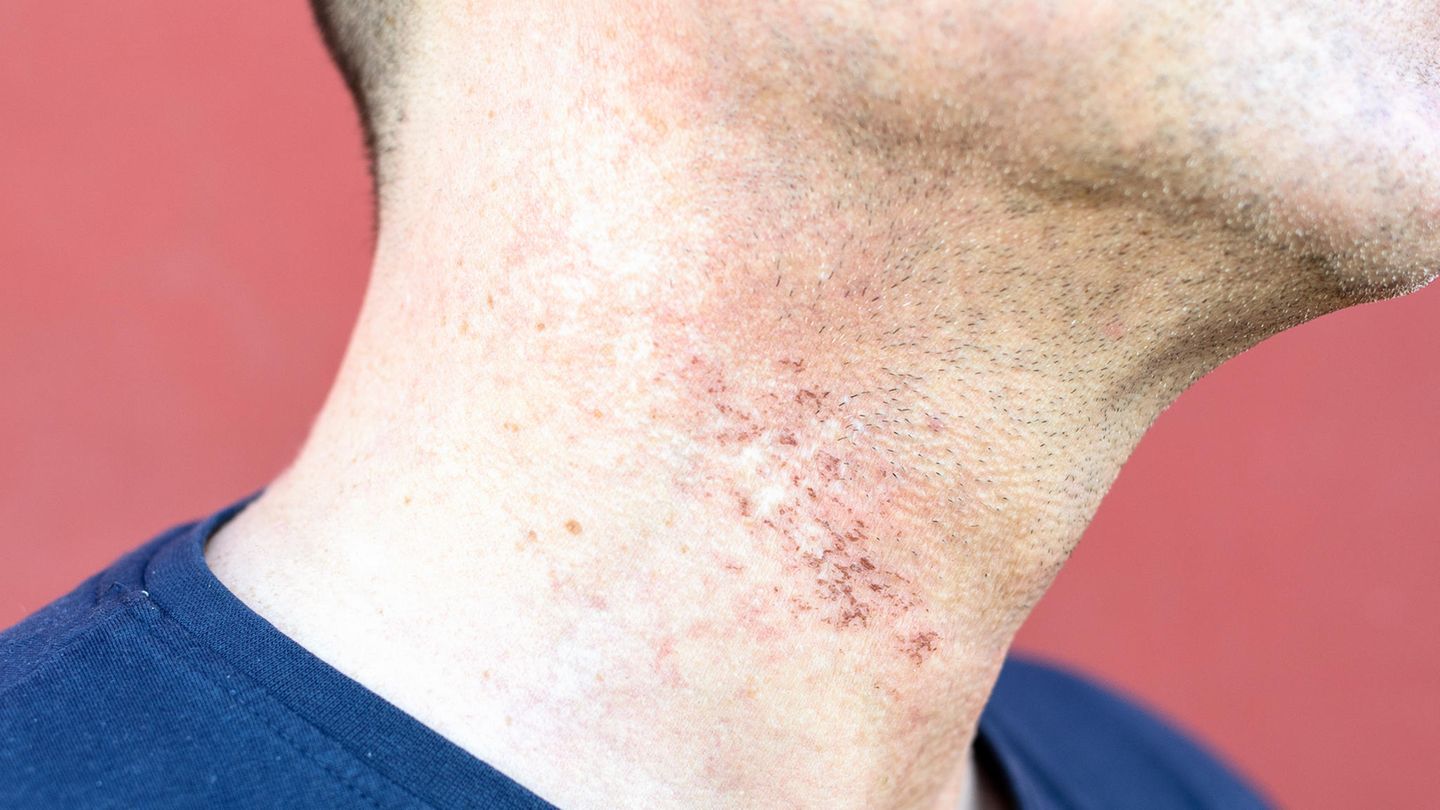Skin irritation
This is how you treat razor fire correctly – and prevent new ones
Copy the current link
Add to the memorial list
Barthaire grow cunning – much to the dismay of many people who prefer smooth skin and shave every day. A painful shave fire is the result.
Due to regular shaving, the skin is constantly irritated and reacts accordingly: redness, rash and itching are among the typical symptoms of shaving fire, which are particularly noticeable on the neck. But how does such skin irritation come about? This is to blame for the missing corners, which have been removed by the razor blades – usually protect the top layer of skin from external influences. As a result, there are numerous smaller injuries such as cuts, which can easily ignite. It is all the more important to properly prepare the skin for the upcoming shave and then maintain. This is the only way to avoid rasur fire. What you need to consider is explained below.
Avoid rasur fire: How to prepare the skin
You should take your time for a thorough shave. The less you prepare your skin for the upcoming procedure, the higher the risk of a painful and itchy rash – here you should not be economical. Instead, it is best to proceed as follows:
This may sound strange at first, but it is a well -tried method for cosmetics: Lay a warm -warm washcloth for two minutes on the parts of the body that you want to shave – this opens the pores and enables you to remove your hair more easily. You can also use a pre-Shave product (e.g. a or a ) Apply to the skin that acts like a protective film. This also applies to wet shaving and dry shave.
If you prefer wet shaving, you should always have one or use. Apply the product generously and massage it into the skin – this better slides the blades over the skin. As a rule of thumb, the more time between application and the actual shave goes away, the less irritated your skin reacts. Then you can have some razor or skin -friendly Apply.
When shaving yourself, you should always make sure to go with the direction of growth. If the blade is sharp, your skin becomes as smooth as with a shave against the direction of growth – it only reacts much more relaxed. For the same reason it is at least as important that you Supply regularly – if they are too blunt, they no longer slide over the skin. In addition, germs are liable to the old razor blades over time, which in turn trigger inflammation on the skin.
And the pressure also plays a crucial role in shaving: In order to catch every hair individually, many people press their razor too strongly on the skin and thus completely unnecessarily irritate them. Pay attention to an even, not too strong pressure here – the rest of the razor blades do it all by itself. Because even if thick beard hair require more pressure than thin, you should find a healthy middle ground.
After shaving, the skin must be freed from all care products, preferably with clear water. You can then use an aftershave product (e.g. a lotion) to calm and maintain the skin. In the case of sensitive skin, the product should never contain alcohol, otherwise it promotes shaving fire. Do you have a suitable one Found, stay there! Frequently changing products irritate the skin.
Treat shaving fire: You have to pay attention to that
If it is too late to avoid rasur fire, the symptoms must be alleviated quickly. For you, this means in the first place: If possible, the skin should no longer be shaved until it has recovered. To speed up this process, you can use the following tips:
Cool the affected areas with an ice cube or one – The pores close through the cold water. Then the skin must be dried very carefully, avoid any form of friction here. It is best to dab the shaved zones with a dry cloth. Then you can have one (Important: without alcohol) use to calm the skin.
Alternatively, there are also well -tried home remedies for shaving fire, such as honey: the polyphenols contained therein have an anti -inflammatory effect. Or you stir a face mask – you only need some curd cheese, for that And again bee nectar. Mix all three ingredients with each other and lubricate your skin with it. After ten to 15 minutes, the itching should leave.
Baby powder, which is also used in many waxing studios, is as skin-friendly as it is effective. This includes zinc oxide, which has an anti -inflammatory effect on the skin and can quickly alleviate the razor burn. When buying, however, make sure that in the No talcum is included – he is said to have a carcinogenic effect.

Saur fire after the intimate shaving: what helps?
In the intimate area in particular, a razor burn can be very uncomfortable and painful – especially if you use the wrong care products. Make sure to choose a product in which no parabens, allergenic fragrance and dyes are included. Better take in instead which was specially developed for the intimate area of men. Home remedies like honey and curd cheese have no place here, chamomile and aloe vera, on the other hand: both components have a calming and anti -inflammatory effect. On top of that, they prevent even more friction through their protective film. The same applies to wide clothing – as long as you suffer from a shaved fire in the genital area, it is advisable to forego tight -fitting textiles. Better wear wide and airy clothes until your skin has completely calmed down again.
What to do with ingrown hair?
Intimate hair in the intimate area is particularly annoying and can become a serious problem. Try to carefully remove them with tweezers (disinfect beforehand!) – if this is not possible, a help. This is rubbed onto the ingrown hair and taped with a patch so that the wound can heal. If all the tips are of no use or make the first signs of inflammation noticeable, you should go to a dermatologist. Otherwise, you risk a boil that can only be removed from the ingrown hair that can only be removed. This is a long and painful process that you can avoid by taking the appropriate precautions.
*This article contains so-called affiliate links to products in online shops. If a user clicks on it and buys something, the publisher receives a commission from the dealer, not from the manufacturer. Of course, where and when you buy a product is up to you.
branch
Source: Stern
I’m Caroline, a journalist and author for 24 Hours Worlds. I specialize in health-related news and stories, bringing real-world impact to readers across the globe. With my experience in journalism and writing in both print and online formats, I strive to provide reliable information that resonates with audiences from all walks of life.




